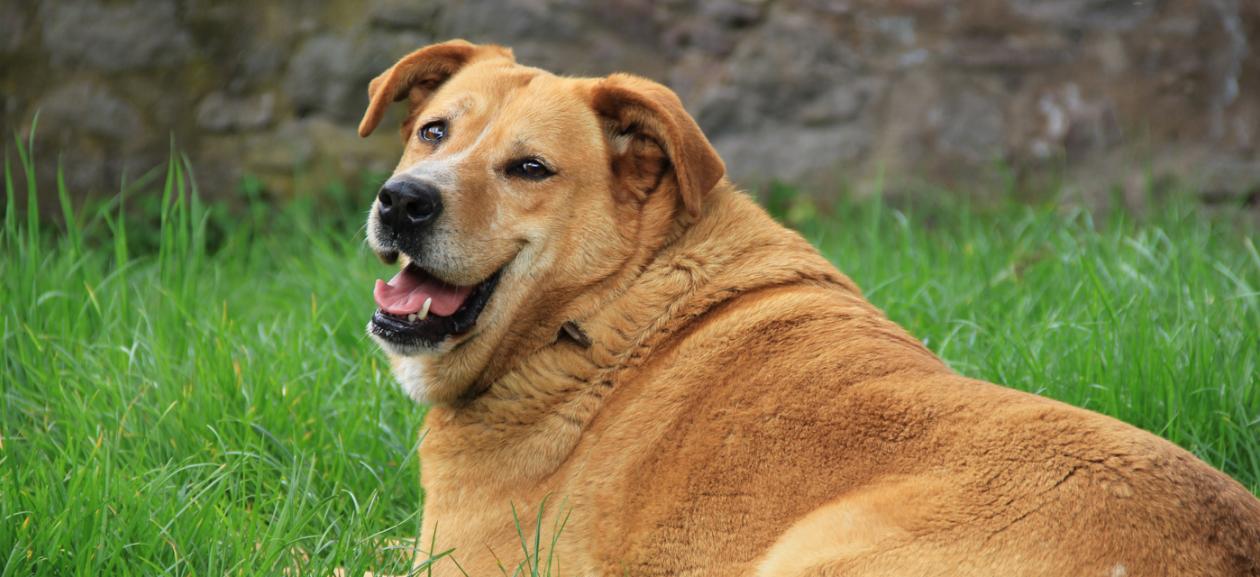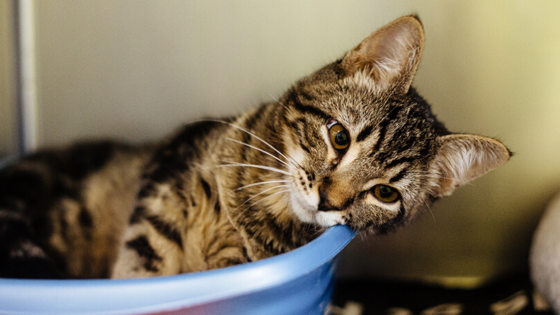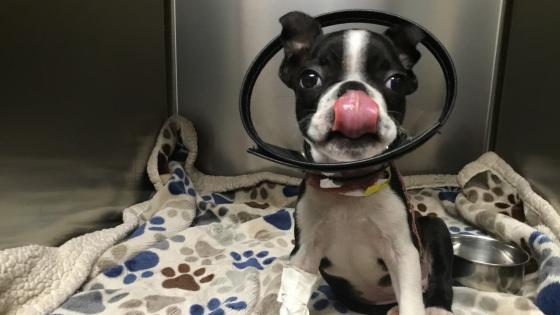
Dealing with Pet Obesity
Des your pet seem a little plump? While some think chubby pets are cute, overweight pets are in danger of obesity-related health problems that can lead to chronic diseases or even emergency situations.
According to the Association for Pet Obesity Prevention, 60 percent of cats and 56 percent of dogs in the U.S. are overweight or obese. While human weight loss issues continuously top the headlines, National Pet Obesity Awareness Day serves as a reminder that obesity is also a serious epidemic among the nation’s pet population. Primary risks of excess weight in pets include:
- Degenerative joint disease
- Insulin resistance and Type 2 Diabetes
- High blood pressure
- Heart and respiratory disease
- Knee injuries
- Kidney disease
- Many forms of cancer
- Decreased life expectancy (up to 2.5 years)
“Some pets may have legitimate health conditions that lead to obesity, such as hypothyroidism, which can be worked up and treated by your family veterinarian,” said Dr. Ladan Mohammad-Zadeh, a critical care specialist at DoveLewis Emergency Animal Hospital. “Unfortunately, most overweight pets suffer from loving parents who spoil them with too many treats or table scraps and more cuddling than exercise. Their intentions might be good, but this overfeeding can lead to obesity and many health concerns.”
If you have a pet in danger of becoming overweight or obese, please keep these tips in mind to prevent future health problems.
How can you tell if your pet Is overweight? If weight gain is gradual, it may be difficult to notice. Feel around your pet’s midsection while they are standing. If you have trouble feeling the ribs and spine, or if your pet lacks an hourglass shape at the waist, consult your regular veterinarian about your pet’s weight. If needed, your vet will be able to set up a weight loss plan.
Pet Weight Loss Tips
Reduce calories – Look up the proper amount of food for your pet’s breed and size. Then write down everything your dog or cat eats for a few days. Compare the two numbers to see if your pet is eating more than the recommended daily amount. If the difference is substantial, consult your veterinarian to determine the best course of action for adjusting your pet’s diet plan.
Rethink treats – Offer treats sparingly and choose low-calorie options. Many dogs like carrot sticks and fresh green beans because they are crunchy. Treat-dispensing toys that make your pets work to release a treat is also a great alternative.
Daily, low-impact exercise – Start by simply increasing the number of steps your pet takes each day. Begin by having them move around the house with you from room to room. For dogs, you can then increase their exercise by walking them to your mailbox or around the yard. Eventually, they will be able to take longer walks. Dog parks are also a great way to encourage activity and play time. For cats, experts recommend at least 15 minutes of active play time a day. Experiment with a variety of toys to see which ones appeal to your feline.
Provide pain relief – If your pet is experiencing pain (possibly due to age, joint issues or recovery from a treatment), consult your regular veterinarian to find ways to reduce the pain and increase movement with prescription medication, heating pads, massage or even acupuncture.
Hydrotherapy – Dogs who enjoy water will love running on a submerged treadmill, which is a safe, low-impact way to burn calories. There are several canine swim centers in the Portland area, and hydrotherapy can help with everything from weight loss to arthritis.
With proper diet, exercise and advice from your regular veterinarian, your pet can lose weight safely and live longer, happier, healthier life.
Recent Posts
Spring Pet Safety Tips
With spring in the air, pet owners should be aware of potential seasonal hazards. While you enjoy the longer, warmer days, keep these tips in mind!
Be Aware of these Common Pet Toxins
March is National Pet Poison Prevention Month and as a hospital that encounters many cases of toxicity in household pets, we want you to be in the know to prevent future ER visits. Review the following household and outdoor toxins to steer your pets clear of ingesting them.




